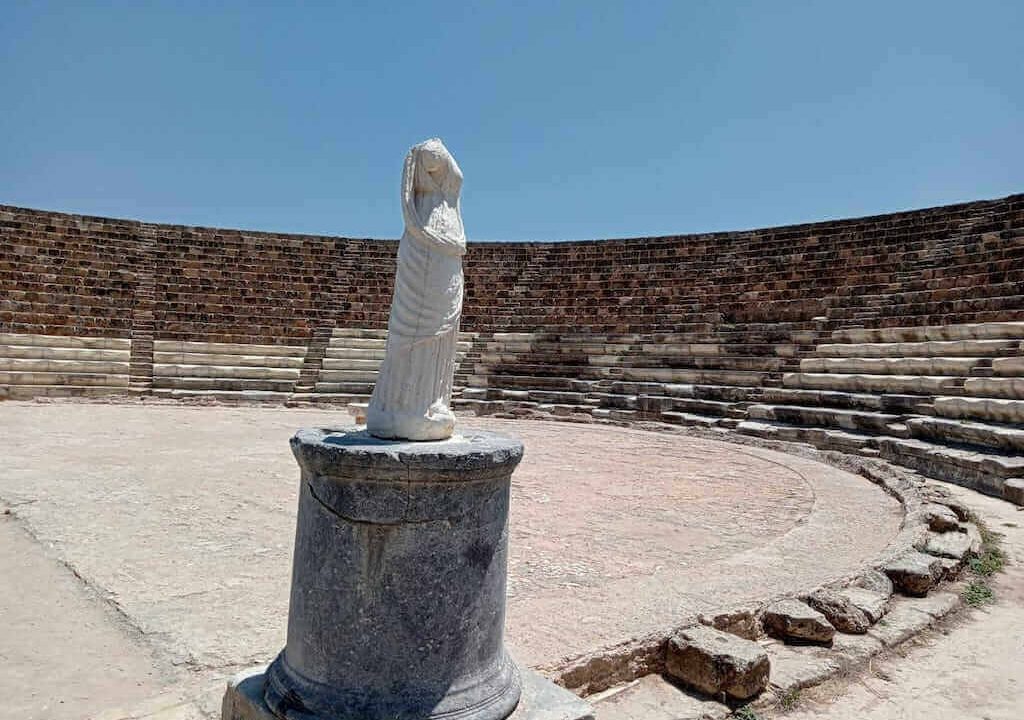
You can also listen this article.
Salamis dates back to the 11th century BC and has a rich history spanning several civilizations. It was initially settled by the Greeks and later came under the control of various empires, including the Assyrians, Egyptians, Persians, and Romans. The city reached its peak during the Roman period and was an important trading center in the eastern Mediterranean.
The history of Salamis spans over millennia, starting from its establishment as a significant city-state in ancient Cyprus to its decline and abandonment in later centuries. Here is an overview of the key periods in the history of Salamis:
Greek and Persian Rule
Salamis was founded by Greek settlers around the 11th century BC. It became one of the most prosperous and influential city-states on the island of Cyprus. The city flourished under Greek rule and engaged in trade with other Mediterranean powers. In the 6th century BC, Salamis came under Persian control but later regained its independence during the Ionian Revolt in the early 5th century BC.
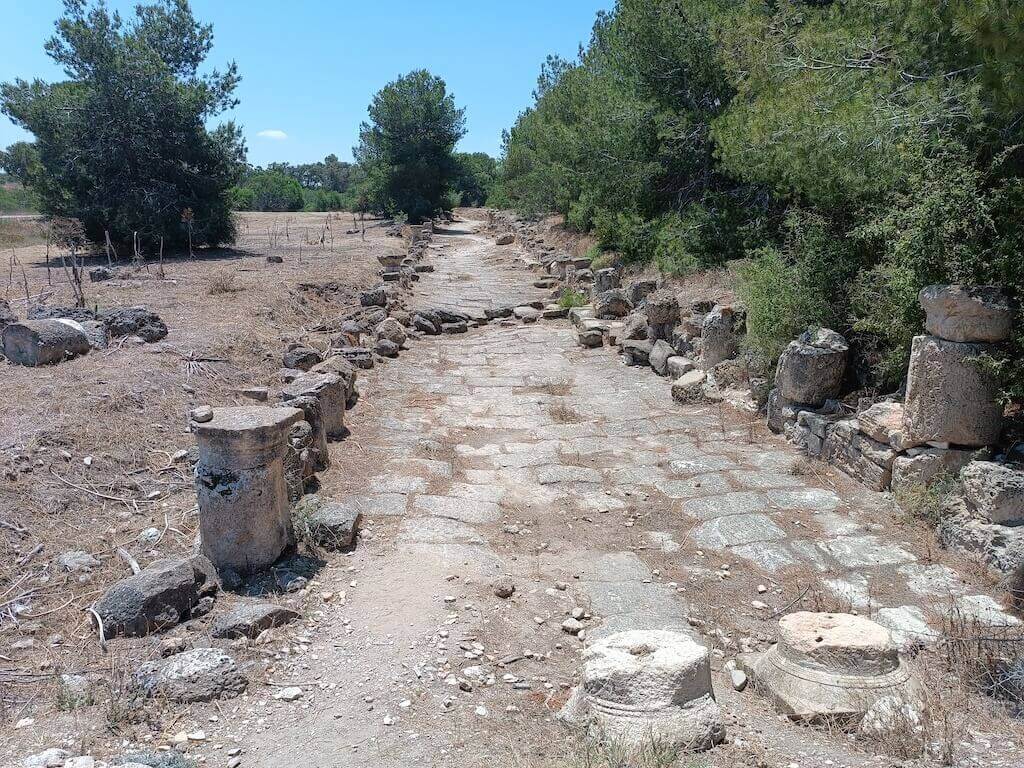
Roman and Byzantine Era
In 58 BC, Salamis was conquered by the Roman general Pompey, bringing it under Roman rule. The city prospered under Roman administration, and significant construction projects took place, including the building of public baths, a theater, and an aqueduct. Salamis became the capital of Cyprus during the Roman period.
With the division of the Roman Empire, Salamis came under Byzantine control in the 4th century AD. The city continued to flourish as an important cultural and economic center. Several Christian basilicas and other religious structures were constructed during this period.
Arab Invasions and Decline
In the 7th century AD, Salamis faced a series of Arab invasions that devastated the city. The repeated attacks and raids caused significant damage to the city’s infrastructure, and its population began to decline. The final blow came in the 10th century when the Byzantine Empire was unable to defend Cyprus against the Arab raiders, leading to the abandonment of Salamis.
Rediscovery and Excavations
Salamis remained forgotten and buried under sand until the late 19th century when archaeological excavations began. British archaeologists unearthed the ancient ruins, revealing the grandeur and historical significance of the city. Excavations have continued over the years, shedding light on various aspects of Salamis’ past.
Today, the ancient city of Salamis stands as an impressive archaeological site, showcasing the remnants of its Greek, Roman, and Byzantine heritage. The ruins include temples, theaters, Roman baths, residential areas, and a necropolis, providing valuable insights into the urban life and cultural achievements of ancient Salamis.
Archaeological Site: The archaeological site of Salamis covers a vast area and contains a plethora of ancient ruins and structures. Excavations have unearthed remnants of Roman baths, a gymnasium, an amphitheater, a basilica, a temple dedicated to Zeus Salaminios, and numerous residential buildings. The site also includes a necropolis, where ancient tombs and sarcophagi have been discovered.
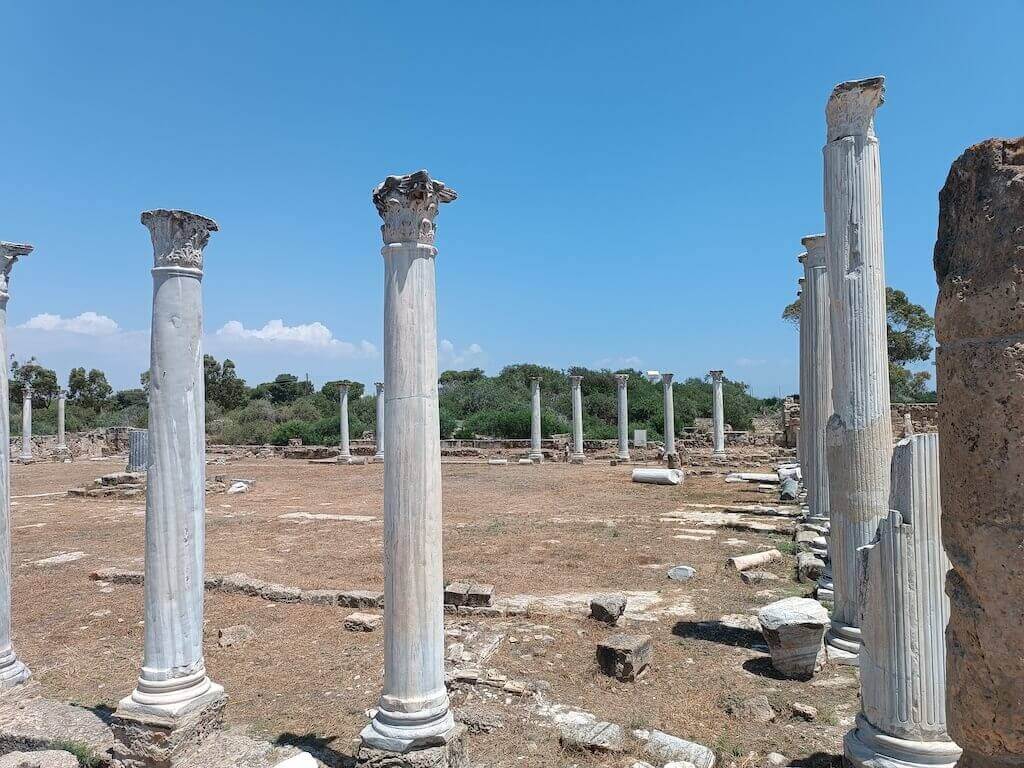
Amphitheater: One of the most impressive features of Salamis is its well-preserved amphitheater, which dates back to the 2nd century AD. It could accommodate up to 15,000 spectators and was used for various events, including gladiator fights, theatrical performances, and public gatherings. Today, the amphitheater is occasionally used for cultural events and concerts.
Roman Baths: The Roman baths of Salamis are another remarkable highlight. These baths were part of the ancient city’s public bathing complex and showcase intricate mosaic floors, hypocaust heating systems, and various chambers for bathing and relaxation.
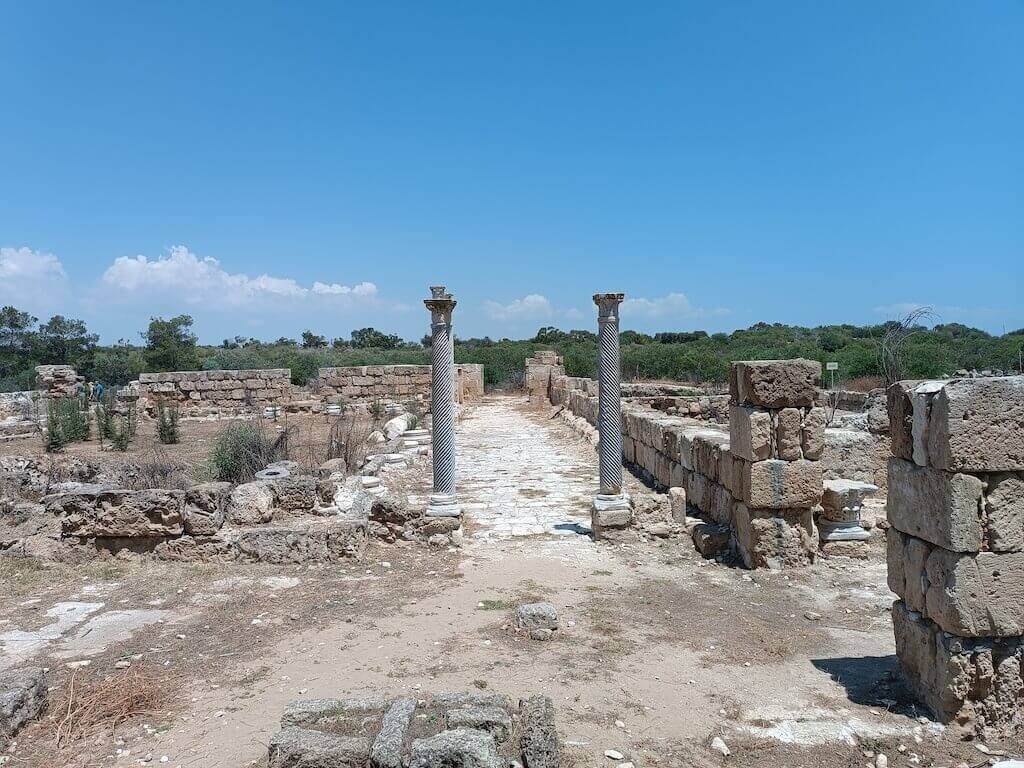
St. Barnabas Monastery: Adjacent to the Salamis archaeological site is the St. Barnabas Monastery, which is dedicated to the early Christian saint and founder of the Cypriot Orthodox Church. The monastery contains a church, a museum, and a peaceful courtyard. It is an important religious and cultural site in North Cyprus.
Beaches: Salamis is situated along the coast, and its archaeological site extends to the shoreline. This unique setting allows visitors to combine their exploration of ancient ruins with a visit to the nearby beaches. The pristine sandy beaches offer an opportunity for relaxation and leisure activities.
Visiting Salamis provides a glimpse into the ancient history and cultural heritage of Cyprus. The well-preserved ruins and significant archaeological discoveries make it a must-visit destination for history enthusiasts and anyone interested in exploring the island’s past.



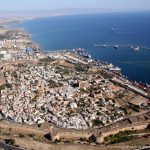
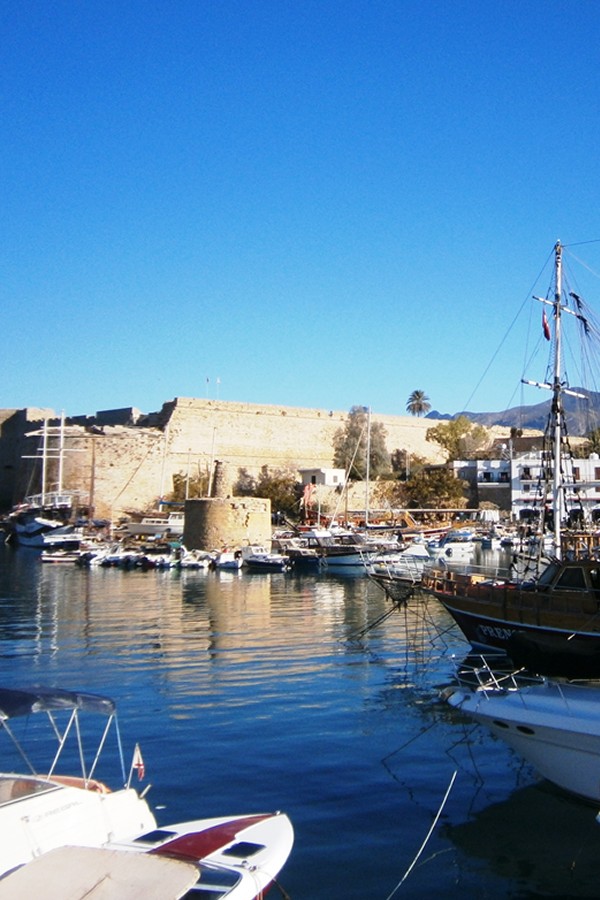
Andy
on said
Just visited Smyrna and Ephasus so I’m looking forward to seeing Salamis